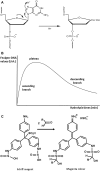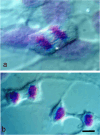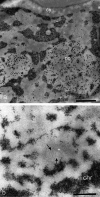A brief history of the Feulgen reaction
- PMID: 38609528
- PMCID: PMC11227455
- DOI: 10.1007/s00418-024-02279-9
A brief history of the Feulgen reaction
Abstract
One hundred years ago, Robert Feulgen published a landmark paper in which he described the first method to stain DNA in cells and tissues. Although a century has passed since the discovery by Feulgen and Rossenbeck, the chemical reaction still exerts an important influence in current histochemical studies. Its contribution in diverse fields, spanning from biomedicine to plant biology, has paved the way for the most significant studies that constitute our current knowledge. The possibility to specifically explore the DNA in cell nuclei while quantifying its content makes it a contemporary and timeless method. Indeed, many histocytochemical studies following the 1924 paper have led to a deep understanding of genome organization in general as well as several specific mechanisms (e.g. DNA duplication or tumour pathology) that, nowadays, constitute some of the most fundamental pillars in biological investigations. In this review, we discuss the chemistry and application of the Feulgen reaction to both light and electron microscopy.
Keywords: Electron microscopy; Feulgen reaction; Light microscopy; Osmium ammine; Schiff-type reagent.
© 2024. The Author(s).
Conflict of interest statement
The authors declare no competing interests.
Figures




References
-
- Biggiogera M. Unusual ultrastructural features of chromatin in mouse sperm cells after DNA staining with osmium ammines. Bas Appl Histochem. 1986;30:501–504. - PubMed
Publication types
MeSH terms
Substances
LinkOut - more resources
Full Text Sources

